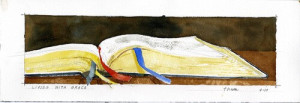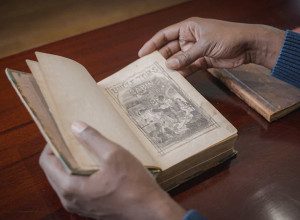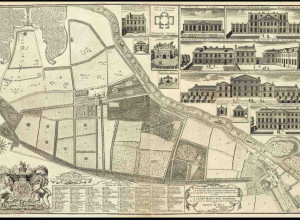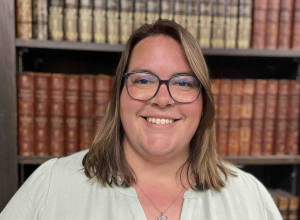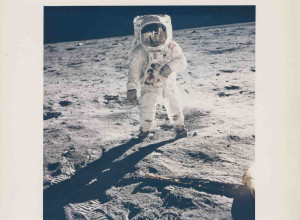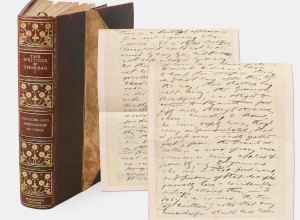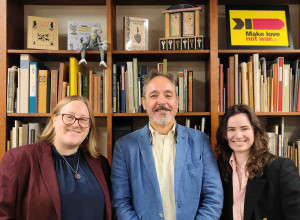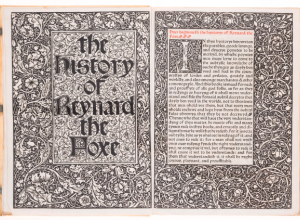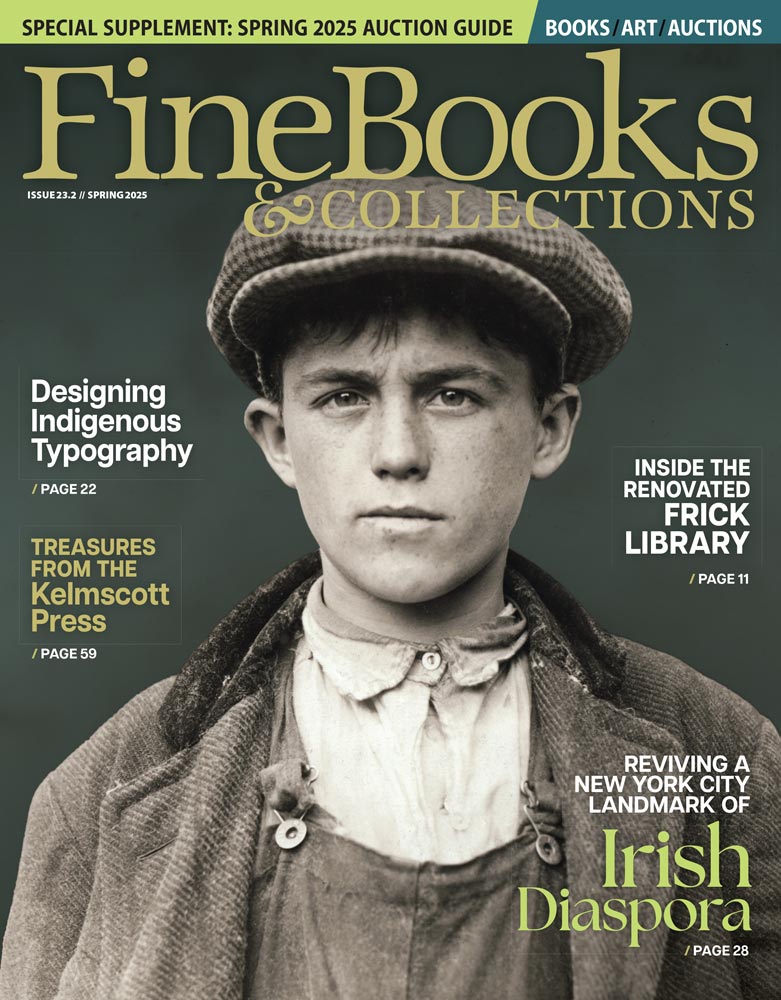John Steinbeck Letters and Inscribed Copies Among New Huntington Acquisitions
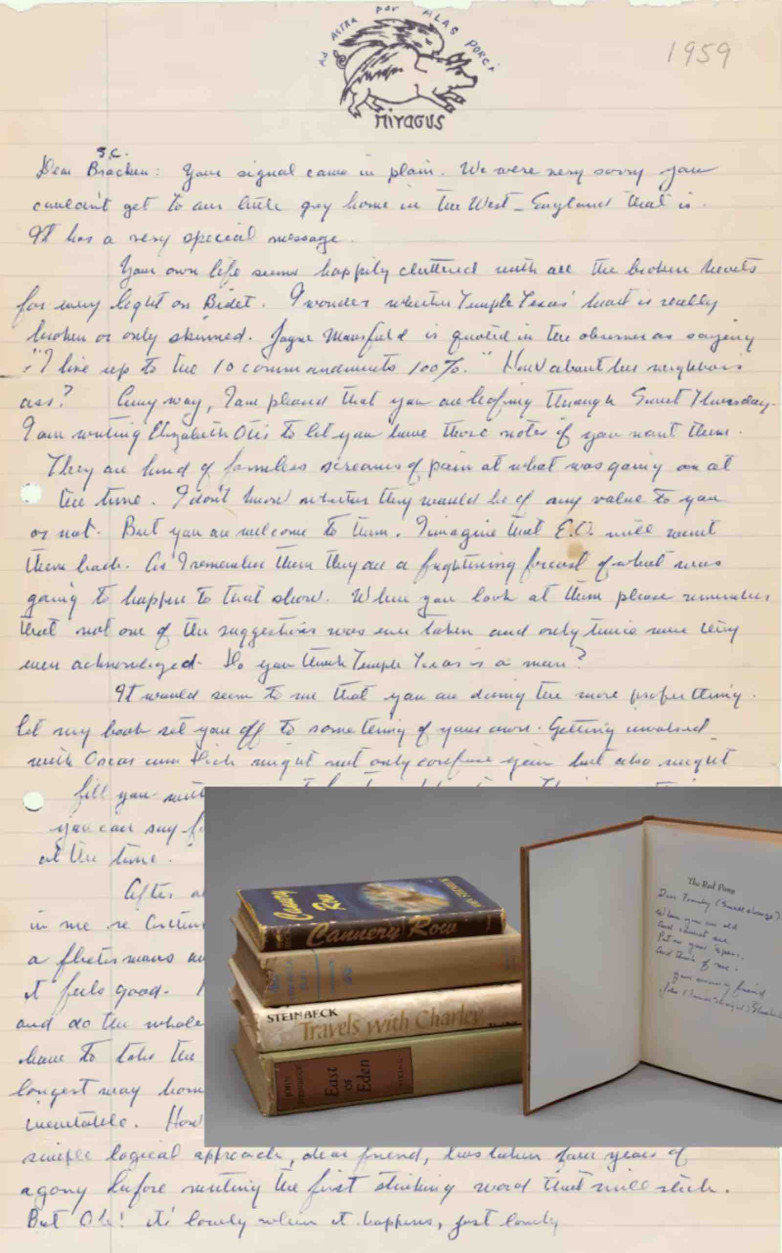
An example from the Steinbeck trove of letters and association copies
The Huntington has acquired six major collections through the support of the Library Collectors’ Council including an archive of John Steinbeck material, previously unknown letters from a 17th-century Caribbean slave trader, and the first edition of the first color-printed medical text.
The Steinbeck group of letters and inscribed books underlines to the close friendship between John and Elaine Steinbeck and John Fearnley who was a casting director for Rodgers and Hammerstein in New York. Fearnley knew Steinbeck’s third wife Elaine from her career working in musical theater. Rodgers and Hammerstein adapted Steinbeck’s novel Sweet Thursday (1954) for the stage in 1955. The novel is a continuation of his novella Cannery Row and was written anticipating its immediate adaptation.
The resulting musical Pipe Dream was not a success. Steinbeck let Fearnley know he was unhappy with the production. “When Dick [Rodgers] announced that it was going to be called ‘Pipe Dream,’ my heart fell but I didn’t know why. Now I think I do know. The name indicated that R+H didn’t believe in it.” Over several long letters, Steinbeck offers suggestions for a new production and muses on the nature of art.
Most of the letters were written in 1959, primarily from his time in England where the Steinbecks had moved to so that John could work on his final book, The Acts of King Arthur and His Noble Knights, a retelling of Thomas Malory’s late medieval compilation of Arthurian legends. The letters detail Steinbeck’s delight working on this project in the region where the events allegedly took place and in proximity to Winchester, where an important manuscript of Malory’s work had recently been discovered. “These days in England are important out of all proportions,” he wrote to Fearnley in spring 1959. “I don’t recall ever having been so content and unbewildered. Words for my work appear like little magic footprints as though an invisibility has passed by and I am pleased with them.”
“The letters in this collection give a glimpse of a titan of American letters before, and just after, he was awarded the Nobel Prize in Literature,” said Karla Nielsen, senior curator of literary collections. “They reveal a writer still deeply committed to imaginative storytelling but worn out from decades of assiduous work, finding respite in an English countryside so different from the industrialized agricultural communities of his earlier life in California.”
Also recently aquired is correspondence from Caribbean slave trader William Freeman (1645–1707). “These recently discovered letters shed light on a crucial gap in our understanding of early Atlantic slavery and empire building,” said Vanessa Wilkie, William A. Moffett Senior Curator of Medieval Manuscripts and British History. “This letter book gives scholars material to support more nuanced conceptions of systems of slavery, capitalism, and colonialism, and to better understand the lived experiences of those who were trapped within and resisted those systems.”
Other highlights include:
- a newly uncovered orderly book from the 1764 expedition of British officer Henry Bouquet offering the only known account by a Pennsylvania militia unit during Pontiac’s War (1763–1765)
- records of Chinese indentured laborers in 19th century Cuba including certificates of nationality for servants generated by the Chinese consulate in Havana, identification documents, contracts outlining terms, and a slave depository log sheet containing the names and descriptions of recaptured escapees
- a first edition of Gaspare Aselli’s De Lactibus (1627) featuring the first-ever scientifically accurate color-printed medical illustrations
- William Sole's Menthae Britannicae (Bath, England, Cruttwell, 1798), 53 pages of text and engravings interleaved with 26 original watercolors by William Hibbert of British mint specimens, probably Sole’s own copy, preserving the original artwork that was used to prepare the etched plates





